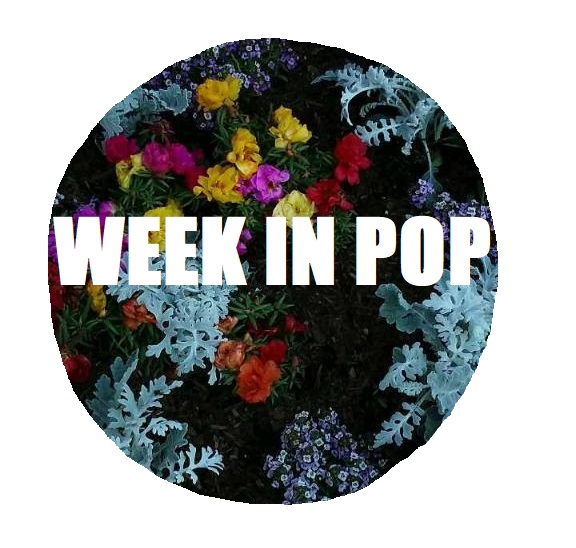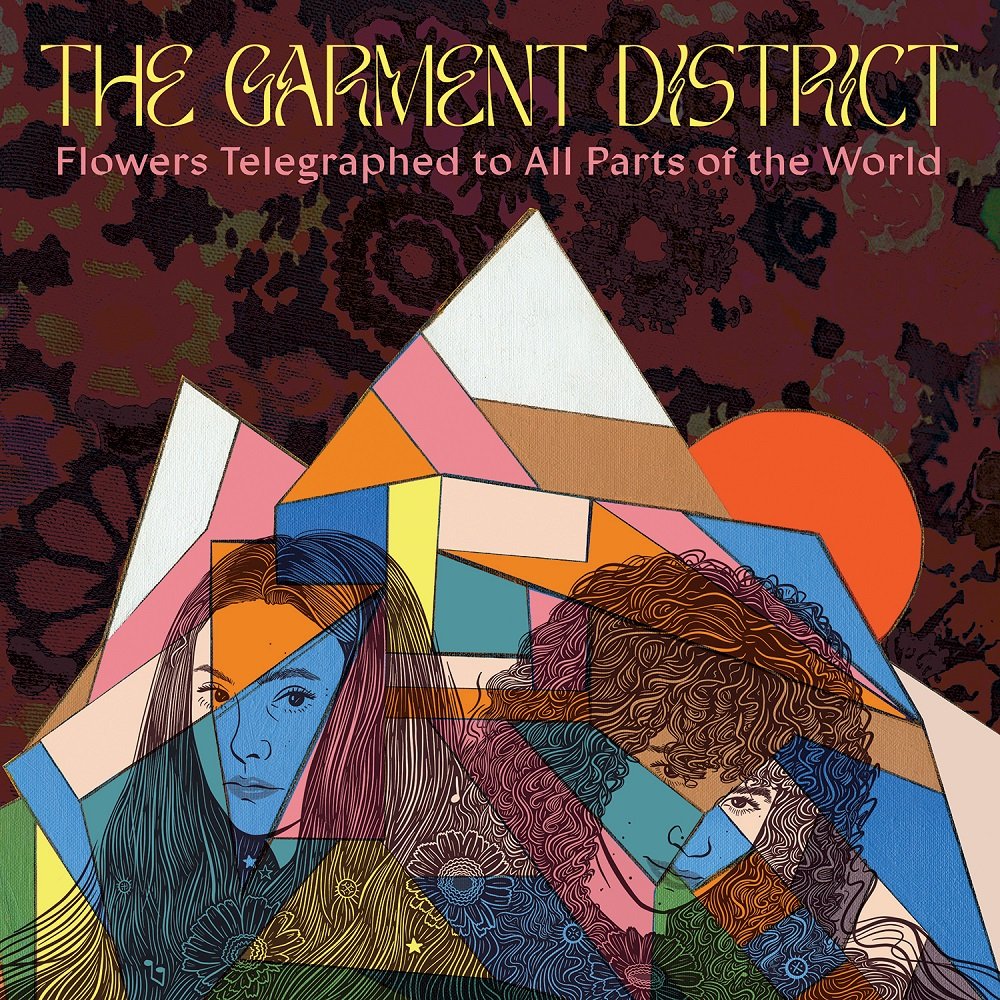PREMIERE | The Garment District, "The Starfish Song"
Textiles, textures and the vibrant vibes of The Garment District; photographed by Nicole Czapinski.
All the world wants is to experience a joyful and jubilant klaxon call of beautiful, abundant noise. Our senses are sapped and starved for something real, something tangible to fulfill a void from within and lacking in our lives to lift us upward toward something that is spectacular. The world is in a rut, it has been for more than a hot minute. From the decline of democracy across the globe, pandemics, a compromised climate and the culture vultures of the billionaire classes exploiting every last vestige of humanity and scarce natural resources we have left — we want something we can believe in. Something that makes us feel alive again, something worthwhile, a burst of celestial light blaring from the amplified speaker boxes like the manifestation of a prophet presented like an aural entity through tonal frequencies. And then seemingly out of the blue there is that particular particle of sound that is found from the ambient tumult of the ether. Like a latent living piece of pop held over from an AM transistor transported from another time, a sign of sensations soon to arrive, a sound of now, a sound to strive for, a sound to behold, a sound to believe in, a sound that symbolizes truths and the unbreakable spirit of beauty unbound.
Announcing The Garment District's forthcoming album Flowers Telegraphed to All Parts of the World courtesy of the esteemed imprint HHBTM that features a rogues’ gallery of contributing talents from the likes of Lucy Blehar, Dan Koshute, Shivika Asthana, Corry Drake, Gary Olson and Alex Korshin under the visionary auspices of Ladybug Transistor legend, photographer, museum academic and polymath — Jennifer Baron. Orchestrated largely from vintage instrumentation at the home studio of David Klug in Pittsburgh [of which Jennifer expounds upon in lavish detail later in this feature], The Garment District takes the toolkits of the past to present something fresh that is more than the sum of it’s anachronistic counterparts. The Garment District showcases brilliantly how the very fabrics of constructs created in previous eras can be synthesized into new artifices of unbridled splendor. The wax, tapes and compact discs from your siblings, parents, grandparents, step-parents, aunts, uncles and everyone you have ever known become melded together for something that is absolutely fantastical. Baron and the crew conjure together a strong sense of supernatural feels that are adeptly blended into the material realm of the human senses.
"The Starfish Song" swims with rollicking riffs, heart thumping bass chords, hand-claps and sheer unfettered energy. Guitar progressions enter the consciousness through the ears and become etched diligently and dutifully on the heart of the listener. The Garment District directs the high production concepts found in cult late-60s and 70s esoteric album rock and spins them all into something else that is the culmination of the myriad talents at work on this record. The group extols the virtues of everything you have loved about concept records, functional family bands, smart as all get out psychedelia, approximating what might have happened if rockin' Roy Wood never left ELO in the first place. The Garment District prove the power of high concept / big production values created with the flywheel of immense talents. "The Starfish Song" is a testament to the immortal power of musical harmony and perfection created in conjunction with the collaborative spirit to become an artistic work that is even greater than the sum of all it's parts and contributions.
Jennifer Baron provided the following expansive insights on the making of the new single and the album Flowers Telegraphed to All Parts of the World:
“The Starfish Song” emerged as a demo that I recorded at home, playing the main keyboard parts and mapping out the structure using my Roland JX-3P synthesizer and Hohner organ. Then we had the chance to perform it live a few times. I’ve always loved the raw, somewhat warbled sound and feel of demos and the sensation that things are precariously trying to hold themselves together to form a composition in progress. Whether I make demos using my Boss digital 8-track recorder or my iPhone, I always try to save them. Like the entire album, “The Starfish Song” was recorded at the home-based studio run by my friend David Klug in the scenic Mount Washington neighborhood of Pittsburgh. We worked to achieve a warm and three-dimensional sound quality and a sense of depth. My approach was to strive to create an album that works as a whole but also have songs that stand out on their own. I love the energy and ambience of home studios and this experience connects to my background of writing and recording music at Marlborough Farms, where I lived for years in Flatbush, Brooklyn with my band, The Ladybug Transistor (Merge Records). David's studio is only a few miles from my house, so recording there is very comfortable and organic, in terms of the flow of ideas and supporting my own processes of experimentation, arrangements and production.
One of the challenges I wanted to embrace with this song was to allow it to be a pop song that’s more than three minutes! To me it has a narrative, both lyrically and sonically, of wistful late summer introspection, some sort of meditative transition, ebullient yet contemplative. The song intentionally starts with classic handclaps and warm bass notes (flatwound strings always!) re-amped through an Ampeg SVT Classic that gallop into the opening drum fill and first verse. The verses are propelled by the main driving organ part that formed the basis of my demos. Each verse is preceded by Dan’s guitar riff (one of my favorite parts on the entire album!) and I wanted a 1970s FM radio feel to introduce the vocals coming in next. The instrumental choruses are fleeting, carried along by percussive claves, an organ melody and a walking guitar line. I love the interplay of male and female voices in music and wanted incorporate that pairing by having backing vocals sung by a group of three of us.
Expansive exposition and creative exposition courtesy of The Garment District; photographed by Nicole Czapinski.
I envisioned a very specific drum sound for this song and one that would highlight Shivika’s drumming style, which I love. To me, she epitomizes the concept of a drummer having a great intuitive feel. I love the way she plays slightly behind the beat and laid back, classy, exactly what’s needed for the song, which really fits the tone of “The Starfish Song.” Our bands (Papas Fritas and The Ladybug Transistor) played shows together years ago, including at The Knitting Factory in New York City. Not long ago, we happily discovered that we both lived in Pittsburgh and it has been a tremendous joy to reconnect with her though music and crafting. I love the natural snare sound we achieved in David’s studio. Another interesting and personal layer that connects to the drums on “The Starfish Song” is the kit we used.
It’s a beautiful sounding 1966 Slingerland kit belonging to Laura Rogers that I borrowed from her sister Jennifer, also close friend of mine in Pittsburgh. Our bands also used to play shows in NYC — their first band, Ruby Falls, before The Rogers Sisters, when I was in my first band, Saturnine. I love the way our lives have somehow woven back together. Though its provenance has not been confirmed, Laura has been told that the kit, which she bought from a collector in Detroit, was supposedly used on the Nirvana “Unplugged” recordings.
Recording sessions with The Garment District; press photo courtesy of the artists.
For the instrumentation, I incorporated a range of organs and synthesizers, some that I consider to be the holy grail in terms of the golden age of the analog synthesizer universe, like a 1970s Roland Paraphonic 505, which solos throughout the end section. The song builds by introducing the Wurlitzer electric piano stabs accompanied by acoustic guitar, a combination I love, because it’s also percussive and rhythmic to create a wall of sound effect.
The bridge was also part of my original demo. It immediately shifts the dynamic and rhythm to kind of veer into a direction of bands I admire greatly like Soft Machine. The impetus for me was to introduce unexpected sonic juxtapositions and some modulation. It’s almost like a new piece of music coming along and lifting up. Heightening the orchestration are horn parts by Gary Olson, that he recorded at Marlborough Farms where I used to live with my Ladybug Transistor bandmates, and we’re embarking on a tour this November. His horns are layered with my Vox Super Continental organ and Dan’s guitar work, that to me recalls Television at times.
The rhythm shifts again into the extended coda led by a Korg CX-3 organ. The interplay of the delay-laden guitar, Roland Paraphonic 505 and countermelodies to carry the song through a long, slow, meandering fade out.
The Garment District's album Flowers Telegraphed to All Parts of the World will be available September 22 via HHBTM.





